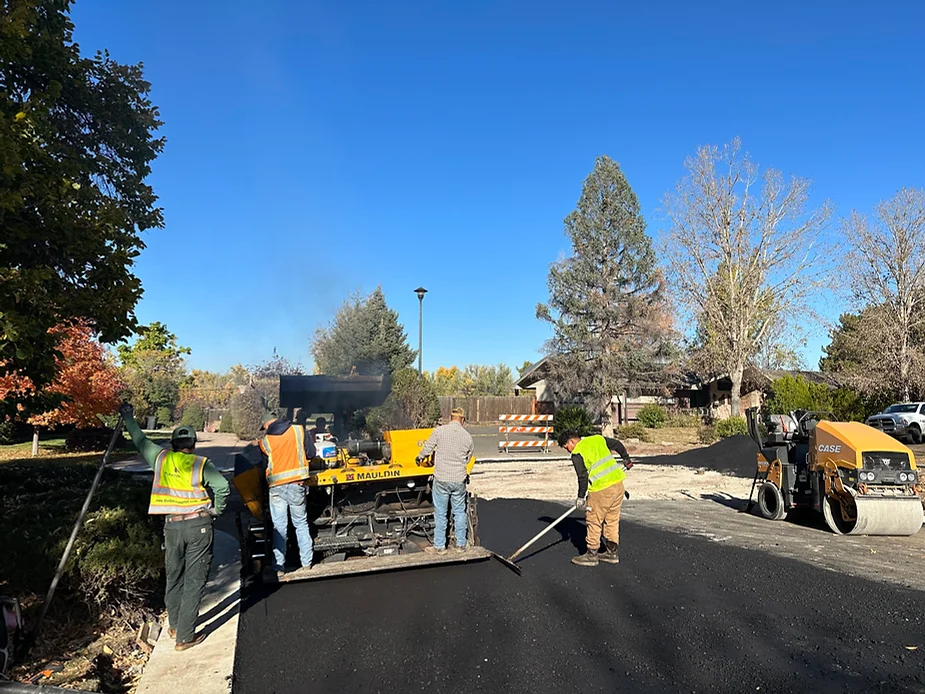
Decoding the Distinction: Overlay vs. Resurface Asphalt
Maintaining asphalt surfaces is essential for preserving their functionality and appearance over time. Two standard methods for restoring and enhancing asphalt pavements are overlay and resurfacing. Understanding the differences between these two techniques is crucial for making informed decisions regarding asphalt maintenance.

Understanding Overlay
Overlay involves applying a new layer of asphalt over an existing pavement. This process typically requires cleaning the surface, repairing any damage, and then adding a fresh layer of asphalt. Overlaying is often chosen when the existing pavement is structurally sound but shows signs of surface distress such as cracking or rutting.
Understanding Resurface
Resurfacing asphalt, on the other hand, involves removing the top layer of the existing pavement and replacing it with a new layer of asphalt. This method is more extensive than overlaying and is often used when the existing pavement has significant damage or deterioration that cannot be addressed with overlay alone.
Key Differences Between Overlay and Resurface
Material Used
Overlay involves adding a new layer of asphalt over the existing surface, while resurfacing requires removing the old asphalt before applying a new layer. This means that overlay typically requires less new material compared to resurfacing.
Depth of Application
Overlay typically involves applying a thinner layer of asphalt than resurfacing. Resurfacing requires removing a significant portion of the existing pavement, resulting in a thicker layer of new asphalt.
Condition of Existing Asphalt
Overlay is suitable for pavements with minor surface defects, while resurfacing is preferred for pavements with more extensive damage or deterioration.
Cost Implications
An overlay is generally more cost-effective than resurfacing since it requires less material and labor. However, each method's cost-effectiveness depends on the pavement's specific condition and the desired outcome.
Longevity of Results
Resurfacing tends to provide longer-lasting results than overlay since it involves removing the deteriorated surface layer and replacing it with new asphalt. However, both methods can significantly extend the lifespan of asphalt pavements when performed correctly.
Which Option to Choose
The decision between overlay and resurface depends on various factors, including the condition of the existing pavement, budget constraints, and long-term goals. Consulting with experienced asphalt professionals can help property owners determine the most suitable option.
Conclusion
Overlay and resurfacing are two standard methods used for maintaining and enhancing asphalt pavements. While both techniques offer distinct advantages, choosing the right option depends on factors such as the condition of the existing pavement, budget considerations, and long-term goals. By understanding the differences between overlay and resurface, property owners can make informed decisions to prolong the lifespan of their asphalt surfaces.
FAQs
What is the lifespan of overlay and resurface?
The lifespan of both overlay and resurface can vary depending on factors such as traffic volume, climate conditions, and maintenance practices. However, resurfacing generally provides longer-lasting results compared to overlay.
Can overlay or resurface be done on all types of asphalt?
Overlay and resurface can be performed on most asphalt pavements, but the suitability of each method depends on the condition of the existing pavement and the desired outcome.
How long does it take to complete overlay or resurface?
The duration of overlay or resurface projects varies depending on factors such as the size of the area, the extent of damage, and weather conditions. However, both methods typically require a few days to complete.
Is there a difference in appearance between overlay and resurface?
While both overlay and resurface result in a smoother and more uniform surface, resurfacing may provide a slightly different appearance due to the removal of the existing pavement layer.
Are there any environmental considerations with overlay or resurface?
Both overlay and resurface can be environmentally friendly options since they involve recycling existing materials and reducing the need for new asphalt production. However, it's essential to follow proper disposal practices for any removed asphalt materials.